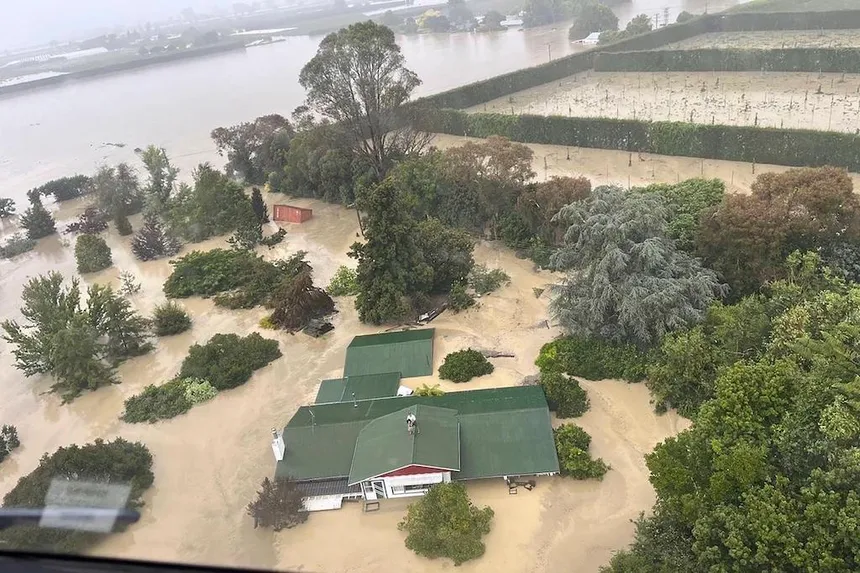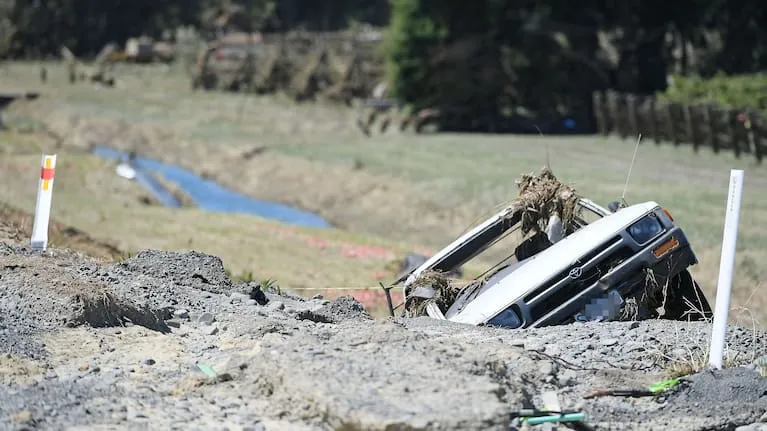A sense of unease settled over New Zealand as fresh storm warnings were issued for regions already ravaged by Cyclone Gabrielle. At least five people have lost their lives, and the prime minister, Chris Hipkins, warned of the likelihood of further fatalities. As the clock struck 2:30 pm on Thursday, 3,455 people had been registered by police as “uncontactable”, with some accounts likely to be multiple reports for the same individual.
“We believe the majority of those considered uncontactable simply cannot make contact with loved ones, so police are prioritizing those who are in isolated areas,” Prime Minister Chris Hipkins explained, expressing grave concerns for those who remained unaccounted for. His words were met with a somber tone, as the reality of the devastation sunk in.
The prime minister’s visit to storm-hit Gisborne on Thursday revealed extensive damage, with basic necessities like food and clean water still in short supply. He likened the cyclone’s impact to that of the Christchurch earthquake in 2011, underscoring the severity of the situation. As the extent of the damage continued to unfold, New Zealand requested assistance from Australia’s National Emergency Management Agency (NEMA) for emergency response and expertise.
“We need to look at the resilience of our infrastructure, and we need to do that with a much greater sense of urgency than we’ve ever seen before,” Hipkins said, acknowledging the need for a radical overhaul in response to extreme weather events. His words echoed the sentiments of many, who were forced to confront the harsh reality of their nation’s vulnerabilities.

Fresh storms were brewing, with severe thunderstorm alerts issued for the worst-hit areas. The MetService, New Zealand’s national forecaster, warned of “very unstable conditions” characterized by heavy rain and hail, which could lead to surface and flash flooding in low-lying areas. In response, fresh evacuation orders were issued for residents of central Hawke’s Bay, with those around Drumpeel Road told to “leave immediately”.
Despite these efforts, communication to the worst-affected areas remained a struggle, with authorities relying on the Starlink satellite communications service from Elon Musk’s Space X to provide internet access. As of Thursday afternoon, approximately 102,000 households remained without power across the North Island, down from 225,000 on Tuesday morning.
As floodwaters receded, they revealed the true extent of the devastation: homes partially immersed in silt and mud, or shifted off their foundations. “It’s just unbelievable the devastation,” Eastern police district commander Supt Jeanette Park said on Thursday morning, echoing the sentiments of many who had witnessed the destruction. Urban Search and Rescue teams continued to retrieve people from their homes in Hawke’s Bay, with some residents forced to shelter in the upper parts of their properties.
“We’re finding people have moved to the roof voids of their properties, so we are still, at this moment, we are still rescuing people from their properties and there are a large number of people unaccounted for,” Urban Search and Rescue specialist Ken Cooper said, his words heavy with concern. As the rescue efforts continued, one thing was clear: the full extent of the damage and the toll it would take on the nation’s infrastructure and people was only just beginning to emerge.

